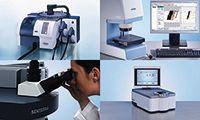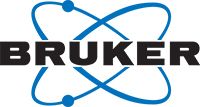Bruker Optics a division of Bruker Corporation
Company Description
Bruker was founded in 1960 with nuclear magnetic resonance (NMR) products. Bruker launched its first ever FT-IR spectrometer, the IFS series, and entered the field of vibrational spectroscopy in 1974. The "Genzel" interferometer and many other unique options available on IFS series instantly set the standard for excellence in FT-IR spectroscopy. Since then, Bruker's vibrational spectroscopy product line has been continuously expanding with instruments suitable for both analytical and research applications.
Bruker Optics is a part of the Bruker Corporation and offers FT-IR, FT-NIR, Raman, TeraHertz spectrometers and imaging spectrometers for various markets and applications.

Chief Spectroscopic Techniques Supported
- FT-IR spectroscopy and microscopy
- FT-near infrared spectroscopy (FT-NIR)
- Raman spectroscopy and microscopy
- Terahertz spectroscopy and imaging
Markets Served
Pharmaceutical, Food and Agriculture, Chemical, Environmental, BioPharma, Material Science, Life Science, Quality Control, and Homeland Defense.
Major Products/Services
- FT-IR spectrometers and microscopes
- FT-NIR spectrometers
- Raman spectrometers and microscopes
- Vacuum FIR/THz spectrometers
- Remote sensing systems
Facility
Bruker Optics R&D and manufacturing centers are in Ettlingen, Germany, with supporting technical centers and offices throughout Europe, North and South America, and Asia.

Bruker Optics, a division of Bruker Corporation
40 Manning Road,
Billerica, MA 01821
TELEPHONE
(888) 427-8537
FAX
(978) 663-9177
WEB SITE
NUMBER OF EMPLOYEES
6000 worldwide for Bruker Corporation
YEAR FOUNDED
1960

Newsletter
Get essential updates on the latest spectroscopy technologies, regulatory standards, and best practices—subscribe today to Spectroscopy.
Scientists Use Water and Light to Uncover Honey Adulteration
July 30th 2025In a 2025 study, Indian researchers demonstrated that combining near-infrared (NIR) spectroscopy with aquaphotomics enables rapid, non-destructive detection of adulterants in honey by analyzing changes in water’s spectral behavior. Using chemometric models, they accurately identified and quantified six common adulterants, offering a powerful tool for food authenticity and quality control.
Scientists Use AI and Spectroscopy to Detect Fake Honey in Bangladesh
July 29th 2025Researchers in Bangladesh have developed a rapid, non-destructive method to detect honey adulteration using UV-Vis-NIR spectroscopy paired with machine learning. Their findings could protect consumers and support food quality enforcement.